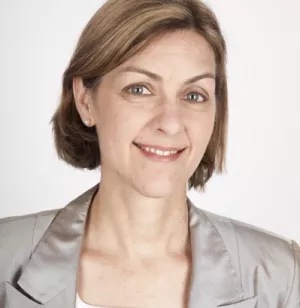Massive Star Mystery: Do They Explode?
Some of the most massive stars might not explode assupernovae, a new study suggests. Rather, researchers speculate, they simplycollapse into black holes or if they do generate explosions, they're not asintense as the deaths of less massive stars.
The claim has been questioned by some astronomers, however.
How stars die depends in part on their mass. Our sun, forexample, will swell into ared giant before becoming a white dwarf. More massive stars explode in massivesupernova explosions. The new finding suggests that stars of around 20 to 30times the mass of the sun might not explode at all, but rather collapse to formblack holes.
The research, which also asserts that stars as small asseven times the mass of the sun still apparently have enough fuel to "gosupernova," is based in part on a study of several pre-explosion images ofstars taken by the Hubble Space Telescope. The team also looked at supernova SN2006bc,imaged as it faded several months after explosion.
Seeking supernova precursors
Astronomers from Queen's University Belfast in Northern Ireland, led by astronomers Stephen J. Smartt and Mark Crockett, requested theimage of SN2006bc as part of a long project studying the massive explodingstars ? supernovae.Exactly which types of star will explode and the lowest mass of star that canproduce a supernova has not been known precisely. NASA and other sourcesfrequently cite eight solar masses as the lower limit for supernova generation.
As part of an 10-year search for elusive supernova precursorstars, every time a supernova is discovered in a nearby galaxy, Smartt and histeam begins a searchof earlier Hubble images of the same galaxy to locate the star that laterexploded. Often they're looking for one of hundreds of millions of stars in thegalaxy. This is a little like sifting through days of surveillance camerafootage to find one frame showing a suspect, Smartt said.
Get the Space.com Newsletter
Breaking space news, the latest updates on rocket launches, skywatching events and more!
If the astronomers find a star at the location of the laterexplosion, they can work out the mass and type of star from its brightness andcolor. Several such stars have been identified before they exploded, and theQueen's team studied the nature of five of them, Smartt said.
Red supergiant stars of up to 30 solar masses are expectedto explode as Type II-P supernovae, stars that form as a result of a stellarcore collapse and subsequent violent explosion.
However, in their analysis, the team found no verymassive stars that had exploded, suggesting that the red supergiant starsbetween 18 and 30 solar masses may instead collapse to form black holes eitherwithout producing a supernova or by producing one that is too faint to observe,Smartt said.
The supernovae findings were detailed last week at theRoyal Astronomical Society National Astronomy Meeting in Belfast.
Overblown claims?
Other astrophysicists, however, said these claims wereexaggerated, raising questions about the assertion that very massive stars don'tgo supernova.
"My main concern is whether they have enough statisticsyet to confirm this," said Adam Riess, an astrophysicist at Johns Hopkins University and at the Space Science Telescope Institute in Baltimore, whichoversees Hubble's science operations. "It's a little like concluding thatthere cannot be a much more advanced civilization than ours because they havenot contacted us yet. An argument by absence. But it's very plausible."
Crockett said it is possible that massive stars do actuallyproduce supernovae that have simply gone unobserved as yet, "but as thenumber of events in our sample increases this possibility becomes increasinglyunlikely."
Weidong Li, a research astronomer at the University of California, Berkeley, agreed that almost all supernova precursors have a masslower than 25 solar masses (25 times the mass of the sun), so many groups havequestioned the ultimate fate of very massive stars.
"However, very massive stars are much rarer than lessmassive stars, so the fact that we detect about a dozen less massiveprogenitors doesn't mean that stars more massive than 25 solar mass will go toblack holes without a supernova explosion, or too faint to observe," Lisaid.
In fact, supernovae that likely come from very massive starshave already been observed, Li said, though their precursor stars have not(because the supernova sites have not been observed with the Hubble Space Telescopeor big ground-based telescopes). He noted SN 2006gy, as an example, an objectthat he and his colleagues have published research on.
"This supernova is likely the result of a supernovaexplosion of a very massive star, with greater than 60 solar mass," Litold SPACE.com.
Image details
The Hubble image showing supernova SN2006bc is part of asharp view of the spiral galaxy NGC 2397. This classic spiral galaxy has longprominent dust lanes along the edges of its arms, seen as dark patches andstreaks silhouetted against the starlight. Hubble's resolution allows the studyof individual stars in nearby galaxies.
Located nearly 60 million light-years from Earth, the galaxyNGC 2397 is typical of most spirals, with mostly older, yellow and red stars inits central portion, while star formation continues in the outer, bluer spiralarms. The brightest of these young, blue stars can be seen individually in ahigh-resolution view from the Hubble's Advanced Camera for Surveys (ACS).
The images were obtained on Sept. 14, 2006, with the ACS.
- VIDEO: Supernova Destroyer/Creator
- Vote Now: The Strangest Things in Space
- All AboutSupernovas
Join our Space Forums to keep talking space on the latest missions, night sky and more! And if you have a news tip, correction or comment, let us know at: community@space.com.

Robin Lloyd was a senior editor at Space.com and Live Science from 2007 to 2009. She holds a B.A. degree in sociology from Smith College and a Ph.D. and M.A. degree in sociology from the University of California at Santa Barbara. She is currently a freelance science writer based in New York City and a contributing editor at Scientific American, as well as an adjunct professor at New York University's Science, Health and Environmental Reporting Program.









